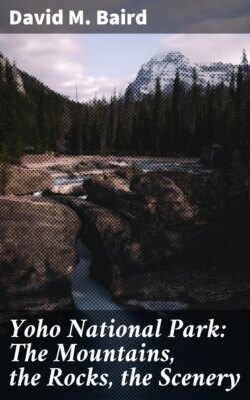Читать книгу Yoho National Park: The Mountains, the Rocks, the Scenery - David M. Baird - Страница 3
На сайте Литреса книга снята с продажи.
INTRODUCTION
ОглавлениеTable of Contents
Mountain scenery.
YOHO NATIONAL PARK is 507 square miles of magnificent scenery on the west slope of the Canadian Rockies. The surface of the land presents an extremely rough and varied scenic picture. Mountains of many different shapes and sizes stand high above deeply incised valleys. The mountains are sculptured from great up-arched or up-bowed masses of rock which formed from sediments laid down in the seas that covered the area some 500 million years ago, in a period of time which the geologist refers to as ‘the Cambrian’. In some places the rocks are lying flat, even in the highest mountains; in others they are standing on edge. Deep etching of this irregular mass has resulted in a great array of mountain types—from those with sharp jagged peaks to those resembling castles or layer cakes. The sides of the mountains, extending as they do through thousands of feet vertically, expose many varieties of sedimentary rocks. And some of these contain beautifully preserved fossils, the remains of living things of long ago.
In the southern end of the park a number of mineral deposits are contained in a small mass of igneous rocks and other rocks which have been changed completely from their original appearance, and these deposits make Yoho unique among western Canadian National Parks.
Thus, for the traveller who has time to look, Yoho National Park has, in addition to magnificent scenery, many features of geological interest in the rocks into which the scenery is carved. In this book we will talk about the beauty of the scenery, and how it was made from the time the rocks were formed to the present day. But first let’s examine the boundaries of the park to see exactly where it is. Because many of the park boundaries are divides, we should find out what divides really are.
